#Python List Data Structure
Explore tagged Tumblr posts
Text
Day-4: Unlocking the Power of Randomization in Python Lists
Python Boot Camp 2023 - Day-4
Randomization and Python List Introduction Randomization is an essential concept in computer programming and data analysis. It involves the process of generating random elements or sequences that have an equal chance of being selected. In Python, randomization is a powerful tool that allows developers to introduce an element of unpredictability and make programs more dynamic. This article…
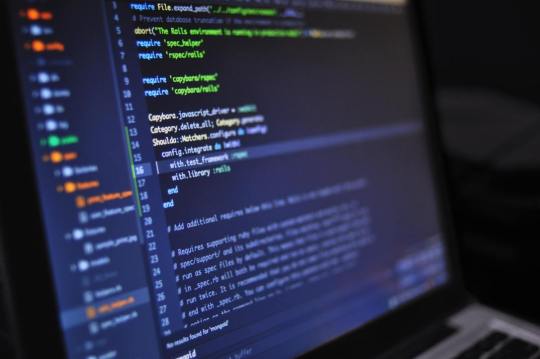
View On WordPress
#Advantages of Randomization in Programming#Dynamic Python Applications#Enhancing User Experience with Randomization#Generating Random Data in Python#How to Shuffle Lists in Python#Python List Data Structure#Python List Manipulation#Python programming techniques#Random Element Selection in Python#Randomization in Python Lists#Randomized Algorithms in Python#Secure Outcomes with Randomization#Unbiased Outcomes in Python#Understanding Non-Deterministic Behavior#Versatility of Randomization in Python
0 notes
Text
Data Structures in Popular Programming Languages: A Top Down Introduction
Data structures are fundamental building blocks in programming, allowing developers to efficiently store, organize, and manipulate data. Every programming language provides built-in data structures, and developers can also create custom ones to suit specific needs. Below, we will explore: What data structures are and why they are important Common data structures in programming How to…
#application-developement#c-sharp#c++#data-structures#embedded-development#learn-application-development#learning-experiments-in-coding#lists#mobile-development#php#programming#python#software-developement#software-development#tables#web-development
0 notes
Text
Getting Started with Python: A Beginner's Guide (pt 2)
They say teaching is the best way to learn. Consider subscribing to the website!
Expanding Your Knowledge: Collections and Control Flow In Part 1 of our beginner’s guide to Python, we covered the basics of variables, data types, and conditional statements. Now, let’s dive deeper into collections like lists, tuples, and dictionaries, as well as control flow mechanisms such as loops and functions. Lists: More Than Just Arrays As mentioned earlier, a list is a collection of…
#Beginner#Coding#Dictionaries#Functions#Getting started with Python#Introduction to Python programming#Learn Python#Lists#Loops#Programming#Python#Python basics#Python conditional statements#Python control structures#Python data types#Python for beginners#Python operators#Python variables#Tuples
0 notes
Text
"Mastering C Programming: A Comprehensive Guide for Beginners and Experts"
Understanding C Programming: The Foundation of Modern Software Development
C programming, developed in the early 1970s by Dennis Ritchie at Bell Labs, is one of the most enduring and influential programming languages in the history of computing. Its design has directly influenced many other popular languages such as C++, Java, and Python. Despite the emergence of numerous high-level programming languages, C remains a cornerstone in both academic and professional software development environments due to its efficiency, control, and widespread use in system-level programming.
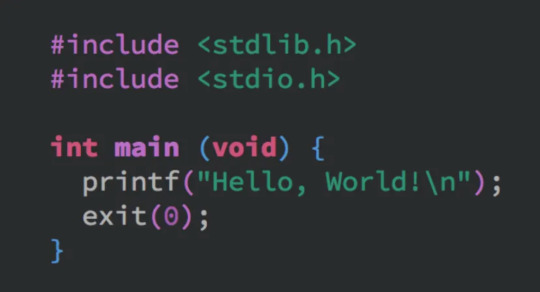
The Essence of C Programming
C is a general-purpose programming language that is particularly well-suited for system programming, including the development of operating systems, compilers, and embedded systems. It provides low-level access to memory through the use of pointers, which allows for efficient manipulation of data and memory management. This is one reason why the UNIX operating system, originally written in assembly language, was eventually rewritten in C.
The syntax of C is concise and powerful. Its constructs map efficiently to typical machine instructions, which makes it an ideal language for performance-critical applications. The simplicity of C's syntax, compared to other languages at the time of its creation, made it easier to learn and use while still being robust enough to handle complex programming tasks.
Key Features of C
Portability: One of the primary reasons for C's enduring popularity is its portability. Programs written in C can be compiled and run on different types of computers with little or no modification, which is crucial in today's diverse computing environments.
Efficiency: C is known for producing fast and efficient code. Its low-level capabilities allow programmers to write code that executes quickly and uses system resources judiciously. This makes it an excellent choice for performance-sensitive applications.
Modularity: C encourages the modular design of software. Functions in C can be defined and called independently, which makes code easier to understand, maintain, and reuse. This modularity is further enhanced by the use of header files and libraries.
Rich Library Support: The standard C library provides a rich set of built-in functions for performing common tasks, such as input/output operations, string manipulation, mathematical computations, and memory management. This extensive library support accelerates the development process.
C in Modern Context
Despite being over four decades old, C remains relevant in modern computing. It is extensively used in developing firmware and embedded systems, where direct hardware manipulation is required. The language's influence is also evident in many contemporary programming languages. For example, C++ was developed as an extension of C to include object-oriented features while maintaining C's efficiency and low-level capabilities.
Learning C provides a strong foundation for understanding computer science concepts and principles. Many educational institutions use C as an introductory programming language because it teaches fundamental programming techniques, such as variable manipulation, control structures, data structures, and algorithm development, which are applicable to learning other languages.
Conclusion
C programming is more than just a language; it is a gateway to understanding the inner workings of computers and software development. Its efficiency, control, portability, and rich library support make it an indispensable tool for programmers. Whether used in system programming, embedded systems, or as a stepping stone to other languages, C continues to be a fundamental part of the software development landscape. Its influence on modern programming practices and its role in the development of many other languages underscore its importance and enduring legacy in the world of computing.
1 note
·
View note
Text
DataFrame in Pandas: Guide to Creating Awesome DataFrames
Explore how to create a dataframe in Pandas, including data input methods, customization options, and practical examples.
Data analysis used to be a daunting task, reserved for statisticians and mathematicians. But with the rise of powerful tools like Python and its fantastic library, Pandas, anyone can become a data whiz! Pandas, in particular, shines with its DataFrames, these nifty tables that organize and manipulate data like magic. But where do you start? Fear not, fellow data enthusiast, for this guide will…
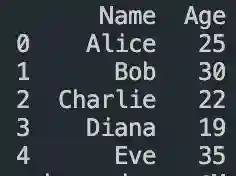
View On WordPress
#advanced dataframe features#aggregating data in pandas#create dataframe from dictionary in pandas#create dataframe from list in pandas#create dataframe in pandas#data manipulation in pandas#dataframe indexing#filter dataframe by condition#filter dataframe by multiple conditions#filtering data in pandas#grouping data in pandas#how to make a dataframe in pandas#manipulating data in pandas#merging dataframes#pandas data structures#pandas dataframe tutorial#python dataframe basics#rename columns in pandas dataframe#replace values in pandas dataframe#select columns in pandas dataframe#select rows in pandas dataframe#set column names in pandas dataframe#set row names in pandas dataframe
0 notes
Text
what do u do when u tell ur parent in no uncertain terms Thank You For The Offer But I Do Not Want A Tutor For This Course It Will Not Help And I Am Deeply Uncomfortable With It Do Not Get Me One
and then they go and book u with an online tutor. without asking. what the fuck.
#25 but being treated like im fucking 12#didnt even WANT help with courseworki went out there just looking for some goddamn emotional support#and i didnt even get it!!!!!!#theres 'problem solving instead of listening & supporting' and then theres THIS#i hate college#but rn i hate this family more#ANYWAYS#if any1 knows how 2 use python 2 'use file i/o on startup to open and read the dataset; initializing a few record objects with data parsed#from first few records in the csv file. the record objects should be stored in a simple data structure (array or list). use exception#handling in case the file is missing or not found'#i know how to open the file but idk how 2 'initialize a few record objects using data parsed etc. etc.'#like. i have a class so thats the record object. and ig i could have a list of instances of that class object#but idk how 2 like. combine the data from the csv file with instances of the class.#without having to individually list.append(()) 7000 rows bc eventually in this project u gotta use the whole dataset.
0 notes
Note
Hi Argumate! I just read about your chinese language learning method, and you inspired me to get back to studying chinese too. I want to do things with big datasets like you did, and I am wondering if that means I should learn to code? Or maybe I just need to know databases or something? I want to structure my deck similar to yours, but instead of taking the most common individual characters and phrases, I want to start with the most common components of characters. The kangxi radicals are a good start, but I guess I want a more evidence-based and continuous approach. I've found a dataset that breaks each hanzi into two principle components, but now I want to use it determine the components of those components so that I have a list of all the meaningful parts of each hanzi. So the dataset I found has 嘲 as composed of 口 and 朝, but not as 口𠦝月, or 口十曰月. So I want to make that full list, then combine it with data about hanzi frequency to determine the most commonly used components of the most commonly used hanzi, and order my memorization that way. I just don't know if what I'm describing is super complicated and unrealistic for a beginner, or too simple to even bother with actual coding. I'm also not far enough into mandarin to know if this is actually a dumb way to order my learning. Should I learn a little python? or sql? or maybe just get super into excel? Is this something I ought to be able to do with bash? Or should I bag the idea and just do something normal? I would really appreciate your advice
I think that's probably a terrible way to learn to read Chinese, but it sounds like a fun coding exercise! one of the dictionaries that comes with Pleco includes this information and you could probably scrape it out of a text file somewhere, but it's going to be a dirty grimy task suited to Python text hacking, not something you would willingly undertake unless you specifically enjoy being Sisyphus as I do.
if you want to actually learn Chinese or learn coding there are probably better ways! but I struggle to turn down the romance of a doomed venture myself.
13 notes
·
View notes
Text
I'm really struggling here. There are so many things I want and need to be. SO many things I should study, so many career paths I need to take, so many things in life that I need to get to. By studying it all, I'm getting nothing done. How do I get myself together? I need to be able to prioritize what I'd like to study and where I want to be in life, so I'm writing this post to puke it all out and hopefully fix it with a little glitter. I'm making a list and categorizing them with Emojis for what I should put a longer-term pause on, what I should put up next, and what I should study now. Stuff I should study now: ✒️ Python for data analysis and machine learning ✒️ Using statistical models on python ✒️ JavaScript/React for web development ✒️ Azure AZ-900 exam prep Stuff I should get to soon but not now: 📜 Data structures & algorithms 📜 A new language Stuff that would be better to pause for now: 🤎GMAT, for my future MBA 🤎Blender, to create 3D images and interactive tools With things like my GMAT exam prep I can practice 30 minutes a day or 10 pages a day instead of actively making it a major focus of my day and missing out on the things that I really wanted to study right now. Thus, it may be better to turn my 150 days of GMAT prep into just 150 days of productivity ☕ I hope you'll understand and that hopefully, you guys are also coming to a position where you can truly focus on what you want to focus on in life
#study blog#studyspo#study motivation#daily journal#studyblr#to do list#coding#chaotic academia#chaotic thoughts#getting my shit together#realistic studyblr#studying#study tips
15 notes
·
View notes
Text

Jan. 16th, 2024
Starting my new position has been insanely busy as of late, and admittedly the only studying I've been doing is about the company. Theres so much more I'd like to learn, especially for this new position so I'm adjusting my "study priorities list" to account for the new changes
The "eat the frog" method needs to be its own category on my list, because there are a lot of impactful items that I'm putting off- but that could be done in a weekend. These for me are quick, high priority and high impact things (ie. a tool that could put me ahead at work)
My frogs:
🐸 Advanced power BI
🐸 Selenium (a tool for automated testing)
High priority (2-3 hours every day):
✒ Python + data structures
Medium priority:
✒ My portfolio (1 hour a day)
✒ GMAT prep (10 minutes a day)
Low priority:
🕰 Azure
#academic assignments#academic burnout#academia aesthetic#academic victim#academic validation#study hard#academic romance#study aesthetic#academic disaster#study blog#studyblr#codeblr#workblr#journaling#new year 2025#classic academia#academic weapon#chaotic academia#chaotic academic aesthetic#dark academic aesthetic#light academia#desi academia#dark academia#Spotify
13 notes
·
View notes
Text
Free online courses for bioinformatics beginners
🔬 Free Online Courses for Bioinformatics Beginners 🚀
Are you interested in bioinformatics but don’t know where to start? Whether you're from a biotechnology, biology, or computer science background, learning bioinformatics can open doors to exciting opportunities in genomics, drug discovery, and data science. And the best part? You can start for free!
Here’s a list of the best free online bioinformatics courses to kickstart your journey.
📌 1. Introduction to Bioinformatics – Coursera (University of Toronto)
📍 Platform: Coursera 🖥️ What You’ll Learn:
Basic biological data analysis
Algorithms used in genomics
Hands-on exercises with biological datasets
🎓 Why Take It? Ideal for beginners with a biology background looking to explore computational approaches.
📌 2. Bioinformatics for Beginners – Udemy (Free Course)
📍 Platform: Udemy 🖥️ What You’ll Learn:
Introduction to sequence analysis
Using BLAST for genomic comparisons
Basics of Python for bioinformatics
🎓 Why Take It? Short, beginner-friendly course with practical applications.
📌 3. EMBL-EBI Bioinformatics Training
📍 Platform: EMBL-EBI 🖥️ What You’ll Learn:
Genomic data handling
Transcriptomics and proteomics
Data visualization tools
🎓 Why Take It? High-quality training from one of the most reputable bioinformatics institutes in Europe.
📌 4. Introduction to Computational Biology – MIT OpenCourseWare
📍 Platform: MIT OCW 🖥️ What You’ll Learn:
Algorithms for DNA sequencing
Structural bioinformatics
Systems biology
🎓 Why Take It? A solid foundation for students interested in research-level computational biology.
📌 5. Bioinformatics Specialization – Coursera (UC San Diego)
📍 Platform: Coursera 🖥️ What You’ll Learn:
How bioinformatics algorithms work
Hands-on exercises in Python and Biopython
Real-world applications in genomics
🎓 Why Take It? A deep dive into computational tools, ideal for those wanting an in-depth understanding.
📌 6. Genomic Data Science – Harvard Online (edX) 🖥️ What You’ll Learn:
RNA sequencing and genome assembly
Data handling using R
Machine learning applications in genomics
🎓 Why Take It? Best for those interested in AI & big data applications in genomics.
📌 7. Bioinformatics Courses on BioPractify (100% Free)
📍 Platform: BioPractify 🖥️ What You’ll Learn:
Hands-on experience with real datasets
Python & R for bioinformatics
Molecular docking and drug discovery techniques
🎓 Why Take It? Learn from domain experts with real-world projects to enhance your skills.
🚀 Final Thoughts: Start Learning Today!
Bioinformatics is a game-changer in modern research and healthcare. Whether you're a biology student looking to upskill or a tech enthusiast diving into genomics, these free courses will give you a strong start.
📢 Which course are you excited to take? Let me know in the comments! 👇💬
#Bioinformatics#FreeCourses#Genomics#BiotechCareers#DataScience#ComputationalBiology#BioinformaticsTraining#MachineLearning#GenomeSequencing#BioinformaticsForBeginners#STEMEducation#OpenScience#LearningResources#PythonForBiologists#MolecularBiology
9 notes
·
View notes
Text
Data Structures in Popular Programming Languages: A Top Down Introduction
Data structures are fundamental building blocks in programming, allowing developers to efficiently store, organize, and manipulate data. Every programming language provides built-in data structures, and developers can also create custom ones to suit specific needs. Below, we will explore: What data structures are and why they are important Common data structures in programming How to…
#application-developement#c-sharp#c++#data-structures#embedded-development#learn-application-development#learning-experiments-in-coding#lists#mobile-development#php#programming#python#software-developement#software-development#tables#web-development
0 notes
Text
Python for Beginners: Launch Your Tech Career with Coding Skills
Are you ready to launch your tech career but don’t know where to start? Learning Python is one of the best ways to break into the world of technology—even if you have zero coding experience.
In this guide, we’ll explore how Python for beginners can be your gateway to a rewarding career in software development, data science, automation, and more.
Why Python Is the Perfect Language for Beginners
Python has become the go-to programming language for beginners and professionals alike—and for good reason:
Simple syntax: Python reads like plain English, making it easy to learn.
High demand: Industries spanning the spectrum are actively seeking Python developers to fuel their technological advancements.
Versatile applications: Python's versatility shines as it powers everything from crafting websites to driving artificial intelligence and dissecting data.
Whether you want to become a software developer, data analyst, or AI engineer, Python lays the foundation.
What Can You Do With Python?
Python is not just a beginner language—it’s a career-building tool. Here are just a few career paths where Python is essential:
Web Development: Frameworks like Django and Flask make it easy to build powerful web applications. You can even enroll in a Python Course in Kochi to gain hands-on experience with real-world web projects.
Data Science & Analytics: For professionals tackling data analysis and visualization, the Python ecosystem, featuring powerhouses like Pandas, NumPy, and Matplotlib, sets the benchmark.
Machine Learning & AI: Spearheading advancements in artificial intelligence development, Python boasts powerful tools such as TensorFlow and scikit-learn.
Automation & Scripting: Simple yet effective Python scripts offer a pathway to amplified efficiency by automating routine workflows.
Cybersecurity & Networking: The application of Python is expanding into crucial domains such as ethical hacking, penetration testing, and the automation of network processes.
How to Get Started with Python
Starting your Python journey doesn't require a computer science degree. Success hinges on a focused commitment combined with a thoughtfully structured educational approach.
Step 1: Install Python
Download and install Python from python.org. It's free and available for all platforms.
Step 2: Choose an IDE
Use beginner-friendly tools like Thonny, PyCharm, or VS Code to write your code.
Step 3: Learn the Basics
Focus on:
Variables and data types
Conditional statements
Loops
Functions
Lists and dictionaries
If you prefer guided learning, a reputable Python Institute in Kochi can offer structured programs and mentorship to help you grasp core concepts efficiently.
Step 4: Build Projects
Learning by doing is key. Start small:
Build a calculator
Automate file organization
Create a to-do list app
As your skills grow, you can tackle more complex projects like data dashboards or web apps.
How Python Skills Can Boost Your Career
Adding Python to your resume instantly opens up new opportunities. Here's how it helps:
Higher employability: Python is one of the top 3 most in-demand programming languages.
Better salaries: Python developers earn competitive salaries across the globe.
Remote job opportunities: Many Python-related jobs are available remotely, offering flexibility.
Even if you're not aiming to be a full-time developer, Python skills can enhance careers in marketing, finance, research, and product management.
If you're serious about starting a career in tech, learning Python is the smartest first step you can take. It’s beginner-friendly, powerful, and widely used across industries.
Whether you're a student, job switcher, or just curious about programming, Python for beginners can unlock countless career opportunities. Invest time in learning today—and start building the future you want in tech.
Globally recognized as a premier educational hub, DataMites Institute delivers in-depth training programs across the pivotal fields of data science, artificial intelligence, and machine learning. They provide expert-led courses designed for both beginners and professionals aiming to boost their careers.
Python Modules Explained - Different Types and Functions - Python Tutorial
youtube
#python course#python training#python#learnpython#pythoncourseinindia#pythoncourseinkochi#pythoninstitute#python for data science#Youtube
3 notes
·
View notes
Text
The making of the SF family swim map!
This is a technical blog post showcasing a project (swim.joyfulparentingsf.com) made by Double Union members! Written by Ruth Grace Wong.
Emeline (a good friend and fellow DU member) and I love swimming with our kids. The kids love it too, and they always eat really well after swimming! But for a long time we were frustrated about SF Rec & Park's swim schedules. Say today is Wednesday and you want to swim, you have to click on each pool's website and download their PDF schedule to check where and when family swim is available, and the schedules change every few months.
Emeline painstakingly downloaded all the PDFs and manually collated the schedules onto our Joyful Parenting SF blog. The way Rec and Parks structure their schedule assumes that swimmers go to their closest pool, and only need the hours for that particular pool. But we found that this was different from how many families, especially families with young children, research swim times. Often, they have a time where they can go swimming, and they are willing to go to different swimming pools. Often, they’re searching for a place to swim at the last minute. Schedules hence need to allow families to search which pools are open at what time for family swimming. Initially, we extracted family swim times manually from each pool’s pdf schedule and listed them in a blog post. It wasn't particularly user friendly, so she made an interactive map using Felt, where you could select the time period (e.g. Saturday Afternoon) and see which pool offered family swim around that time.
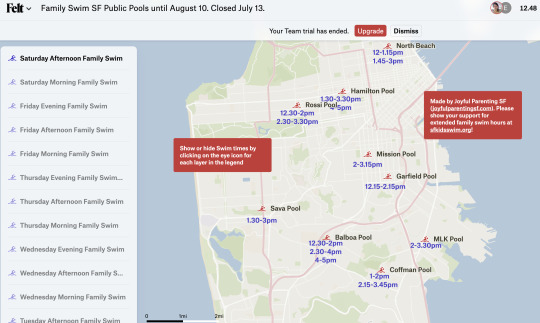
But the schedules change every couple of months, and it got to be too much to be manually updating the map or the blog post. Still, we wanted some way to be able to easily see when and where we could swim with the kids.
Just as we were burning out on manually updating the list, SF Rec & Park released a new Activity Search API, where you can query scheduled activities once their staff have manually entered them into the system. I wrote a Python script to pull Family Swim, and quickly realized that I had to also account for Parent and Child swim (family swim where the parents must be in the water with the kids), and other versions of this such as "Parent / Child Swim". Additionally, the data was not consistent – sometimes the scheduled activities were stored as sub activities, and I had to query the sub activity IDs to find the scheduled times. Finally, some pools (Balboa and Hamilton) have what we call "secret swim", where if the pool is split into a big and small pool, and there is Lap Swim scheduled with nothing else at the same time, the small pool can be used for family swim. So I also pulled all of the lap swim entries for these pools and all other scheduled activities at the pool so I could cross reference and see when secret family swim was available.
We've also seen occasional issues where there is a swim scheduled in the Activity Search, but it's a data entry error and the scheduled swim is not actually available, or there's a Parent Child Swim scheduled during a lap swim (but not all of the lap swims so I can't automatically detect it!) that hasn't been entered into the Activity Search at all. Our friends at SF Kids Swim have been working with SF Rec & Park to advocate for the release of the API, help correct data errors, and ask if there is any opportunity for process improvement.
At the end of the summer, Felt raised their non profit rate from $100 a year to $250 a year. We needed to pay in order to use their API to automatically update the map, but we weren't able to raise enough money to cover the higher rate. Luckily, my husband Robin is a full stack engineer specializing in complex frontends such as maps, and he looked for an open source WebGL map library. MapBox is one very popular option, but he ended up going with MapLibre GL because it had a better open source license. He wrote it in Typescript transpiled with Vite, allowing all the map processing work to happen client-side. All I needed to do was output GeoJSON with my Python script.
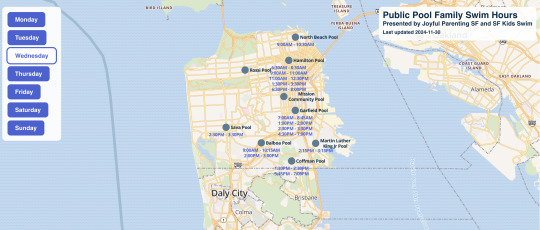
Originally I had been running my script in Replit, but I ended up deciding to switch to Digital Ocean because I wasn't sure how reliably Replit would be able to automatically update the map on a schedule, and I didn't know how stable their pricing would be. My regular server is still running Ubuntu 16, and instead of upgrading it (or trying to get a newer version of Python working on an old server or – god forbid – not using the amazing new Python f strings feature), I decided to spin up a new server on Almalinux 9, which doesn't require as frequent upgrades. I modified my code to automatically push updates into version control and recompile the map when schedule changes were detected, ran it in a daily cron job, and we announced our new map on our blog.
Soon we got a request for it to automatically select the current day of the week, and Robin was able to do it in a jiffy. If you're using it and find an opportunity for improvement, please find me on Twitter at ruthgracewong.
As a working mom, progress on this project was stretched out over nearly half a year. I'm grateful to be able to collaborate with the ever ineffable Emeline, as well as for support from family, friends, and SF Kids Swim. It's super exciting that the swim map is finally out in the world! You can find it at swim.joyfulparentingsf.com.
6 notes
·
View notes
Text
Python Programming Language: A Comprehensive Guide
Python is one of the maximum widely used and hastily growing programming languages within the world. Known for its simplicity, versatility, and great ecosystem, Python has become the cross-to desire for beginners, professionals, and organizations across industries.
What is Python used for

🐍 What is Python?
Python is a excessive-stage, interpreted, fashionable-purpose programming language. The language emphasizes clarity, concise syntax, and code simplicity, making it an excellent device for the whole lot from web development to synthetic intelligence.
Its syntax is designed to be readable and easy, regularly described as being near the English language. This ease of information has led Python to be adopted no longer simplest through programmers but also by way of scientists, mathematicians, and analysts who may not have a formal heritage in software engineering.
📜 Brief History of Python
Late Nineteen Eighties: Guido van Rossum starts work on Python as a hobby task.
1991: Python zero.9.0 is released, presenting classes, functions, and exception managing.
2000: Python 2.Zero is launched, introducing capabilities like list comprehensions and rubbish collection.
2008: Python 3.Zero is launched with considerable upgrades but breaks backward compatibility.
2024: Python three.12 is the modern day strong model, enhancing performance and typing support.
⭐ Key Features of Python
Easy to Learn and Use:
Python's syntax is simple and similar to English, making it a high-quality first programming language.
Interpreted Language:
Python isn't always compiled into device code; it's far done line by using line the usage of an interpreter, which makes debugging less complicated.
Cross-Platform:
Python code runs on Windows, macOS, Linux, and even cell devices and embedded structures.
Dynamic Typing:
Variables don’t require explicit type declarations; types are decided at runtime.
Object-Oriented and Functional:
Python helps each item-orientated programming (OOP) and practical programming paradigms.
Extensive Standard Library:
Python includes a rich set of built-in modules for string operations, report I/O, databases, networking, and more.
Huge Ecosystem of Libraries:
From data technological know-how to net development, Python's atmosphere consists of thousands of programs like NumPy, pandas, TensorFlow, Flask, Django, and many greater.
📌 Basic Python Syntax
Here's an instance of a easy Python program:
python
Copy
Edit
def greet(call):
print(f"Hello, call!")
greet("Alice")
Output:
Copy
Edit
Hello, Alice!
Key Syntax Elements:
Indentation is used to define blocks (no curly braces like in different languages).
Variables are declared via task: x = 5
Comments use #:
# This is a remark
Print Function:
print("Hello")
📊 Python Data Types
Python has several built-in data kinds:
Numeric: int, go with the flow, complicated
Text: str
Boolean: bool (True, False)
Sequence: listing, tuple, range
Mapping: dict
Set Types: set, frozenset
Example:
python
Copy
Edit
age = 25 # int
name = "John" # str
top = 5.Nine # drift
is_student = True # bool
colors = ["red", "green", "blue"] # listing
🔁 Control Structures
Conditional Statements:
python
Copy
Edit
if age > 18:
print("Adult")
elif age == 18:
print("Just became an person")
else:
print("Minor")
Loops:
python
Copy
Edit
for color in hues:
print(coloration)
while age < 30:
age += 1
🔧 Functions and Modules
Defining a Function:
python
Copy
Edit
def upload(a, b):
return a + b
Importing a Module:
python
Copy
Edit
import math
print(math.Sqrt(sixteen)) # Output: four.0
🗂️ Object-Oriented Programming (OOP)
Python supports OOP functions such as lessons, inheritance, and encapsulation.
Python
Copy
Edit
elegance Animal:
def __init__(self, call):
self.Call = name
def communicate(self):
print(f"self.Call makes a valid")
dog = Animal("Dog")
dog.Speak() # Output: Dog makes a legitimate
🧠 Applications of Python
Python is used in nearly each area of era:
1. Web Development
Frameworks like Django, Flask, and FastAPI make Python fantastic for building scalable web programs.
2. Data Science & Analytics
Libraries like pandas, NumPy, and Matplotlib permit for data manipulation, evaluation, and visualization.
Three. Machine Learning & AI
Python is the dominant language for AI, way to TensorFlow, PyTorch, scikit-research, and Keras.
4. Automation & Scripting
Python is extensively used for automating tasks like file managing, device tracking, and data scraping.
Five. Game Development
Frameworks like Pygame allow builders to build simple 2D games.
6. Desktop Applications
With libraries like Tkinter and PyQt, Python may be used to create cross-platform computing device apps.
7. Cybersecurity
Python is often used to write security equipment, penetration trying out scripts, and make the most development.
📚 Popular Python Libraries
NumPy: Numerical computing
pandas: Data analysis
Matplotlib / Seaborn: Visualization
scikit-study: Machine mastering
BeautifulSoup / Scrapy: Web scraping
Flask / Django: Web frameworks
OpenCV: Image processing
PyTorch / TensorFlow: Deep mastering
SQLAlchemy: Database ORM
💻 Python Tools and IDEs
Popular environments and tools for writing Python code encompass:
PyCharm: Full-featured Python IDE.
VS Code: Lightweight and extensible editor.
Jupyter Notebook: Interactive environment for statistics technological know-how and studies.
IDLE: Python’s default editor.
🔐 Strengths of Python
Easy to study and write
Large community and wealthy documentation
Extensive 0.33-birthday celebration libraries
Strong support for clinical computing and AI
Cross-platform compatibility
⚠️ Limitations of Python
Slower than compiled languages like C/C++
Not perfect for mobile app improvement
High memory usage in massive-scale packages
GIL (Global Interpreter Lock) restricts genuine multithreading in CPython
🧭 Learning Path for Python Beginners
Learn variables, facts types, and control glide.
Practice features and loops.
Understand modules and report coping with.
Explore OOP concepts.
Work on small initiatives (e.G., calculator, to-do app).
Dive into unique areas like statistics technological know-how, automation, or web development.
#What is Python used for#college students learn python#online course python#offline python course institute#python jobs in information technology
2 notes
·
View notes
Text
Linked List in Python
A linked list is a dynamic data structure used to store elements in a linear order, where each element (called a node) points to the next. Unlike Python lists that use contiguous memory, linked lists offer flexibility in memory allocation, making them ideal for situations where the size of the data isn’t fixed or changes frequently.
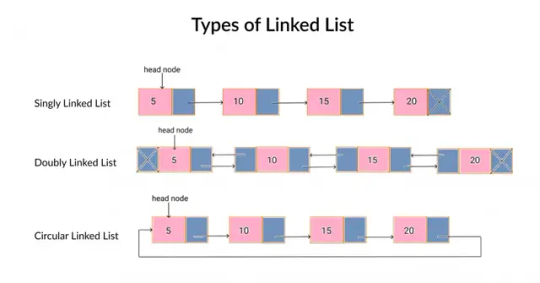
In Python, linked lists aren’t built-in but can be implemented using classes. Each node contains two parts: the data and a reference to the next node. The list is managed using a class that tracks the starting node, known as the head.
Node Structure: Contains data and next (pointer to the next node).
Types:
Singly Linked List
Doubly Linked List
Circular Linked List
Operations: Insertion, deletion, and traversal.
Advantages:
Dynamic size
Efficient insertions/deletions
Disadvantages:
Slower access (no random indexing)
Extra memory for pointers
Want to master linked lists and other data structures in Python? PrepInsta has you covered with beginner-friendly explanations and practice problems.
Explore Linked Lists with PrepInsta
2 notes
·
View notes
Text
Mastering Data Structures: A Comprehensive Course for Beginners
Data structures are one of the foundational concepts in computer science and software development. Mastering data structures is essential for anyone looking to pursue a career in programming, software engineering, or computer science. This article will explore the importance of a Data Structure Course, what it covers, and how it can help you excel in coding challenges and interviews.
1. What Is a Data Structure Course?
A Data Structure Course teaches students about the various ways data can be organized, stored, and manipulated efficiently. These structures are crucial for solving complex problems and optimizing the performance of applications. The course generally covers theoretical concepts along with practical applications using programming languages like C++, Java, or Python.
By the end of the course, students will gain proficiency in selecting the right data structure for different problem types, improving their problem-solving abilities.
2. Why Take a Data Structure Course?
Learning data structures is vital for both beginners and experienced developers. Here are some key reasons to enroll in a Data Structure Course:
a) Essential for Coding Interviews
Companies like Google, Amazon, and Facebook focus heavily on data structures in their coding interviews. A solid understanding of data structures is essential to pass these interviews successfully. Employers assess your problem-solving skills, and your knowledge of data structures can set you apart from other candidates.
b) Improves Problem-Solving Skills
With the right data structure knowledge, you can solve real-world problems more efficiently. A well-designed data structure leads to faster algorithms, which is critical when handling large datasets or working on performance-sensitive applications.
c) Boosts Programming Competency
A good grasp of data structures makes coding more intuitive. Whether you are developing an app, building a website, or working on software tools, understanding how to work with different data structures will help you write clean and efficient code.
3. Key Topics Covered in a Data Structure Course
A Data Structure Course typically spans a range of topics designed to teach students how to use and implement different structures. Below are some key topics you will encounter:
a) Arrays and Linked Lists
Arrays are one of the most basic data structures. A Data Structure Course will teach you how to use arrays for storing and accessing data in contiguous memory locations. Linked lists, on the other hand, involve nodes that hold data and pointers to the next node. Students will learn the differences, advantages, and disadvantages of both structures.
b) Stacks and Queues
Stacks and queues are fundamental data structures used to store and retrieve data in a specific order. A Data Structure Course will cover the LIFO (Last In, First Out) principle for stacks and FIFO (First In, First Out) for queues, explaining their use in various algorithms and applications like web browsers and task scheduling.
c) Trees and Graphs
Trees and graphs are hierarchical structures used in organizing data. A Data Structure Course teaches how trees, such as binary trees, binary search trees (BST), and AVL trees, are used in organizing hierarchical data. Graphs are important for representing relationships between entities, such as in social networks, and are used in algorithms like Dijkstra's and BFS/DFS.
d) Hashing
Hashing is a technique used to convert a given key into an index in an array. A Data Structure Course will cover hash tables, hash maps, and collision resolution techniques, which are crucial for fast data retrieval and manipulation.
e) Sorting and Searching Algorithms
Sorting and searching are essential operations for working with data. A Data Structure Course provides a detailed study of algorithms like quicksort, merge sort, and binary search. Understanding these algorithms and how they interact with data structures can help you optimize solutions to various problems.
4. Practical Benefits of Enrolling in a Data Structure Course
a) Hands-on Experience
A Data Structure Course typically includes plenty of coding exercises, allowing students to implement data structures and algorithms from scratch. This hands-on experience is invaluable when applying concepts to real-world problems.
b) Critical Thinking and Efficiency
Data structures are all about optimizing efficiency. By learning the most effective ways to store and manipulate data, students improve their critical thinking skills, which are essential in programming. Selecting the right data structure for a problem can drastically reduce time and space complexity.
c) Better Understanding of Memory Management
Understanding how data is stored and accessed in memory is crucial for writing efficient code. A Data Structure Course will help you gain insights into memory management, pointers, and references, which are important concepts, especially in languages like C and C++.
5. Best Programming Languages for Data Structure Courses
While many programming languages can be used to teach data structures, some are particularly well-suited due to their memory management capabilities and ease of implementation. Some popular programming languages used in Data Structure Courses include:
C++: Offers low-level memory management and is perfect for teaching data structures.
Java: Widely used for teaching object-oriented principles and offers a rich set of libraries for implementing data structures.
Python: Known for its simplicity and ease of use, Python is great for beginners, though it may not offer the same level of control over memory as C++.
6. How to Choose the Right Data Structure Course?
Selecting the right Data Structure Course depends on several factors such as your learning goals, background, and preferred learning style. Consider the following when choosing:
a) Course Content and Curriculum
Make sure the course covers the topics you are interested in and aligns with your learning objectives. A comprehensive Data Structure Course should provide a balance between theory and practical coding exercises.
b) Instructor Expertise
Look for courses taught by experienced instructors who have a solid background in computer science and software development.
c) Course Reviews and Ratings
Reviews and ratings from other students can provide valuable insights into the course’s quality and how well it prepares you for real-world applications.
7. Conclusion: Unlock Your Coding Potential with a Data Structure Course
In conclusion, a Data Structure Course is an essential investment for anyone serious about pursuing a career in software development or computer science. It equips you with the tools and skills to optimize your code, solve problems more efficiently, and excel in technical interviews. Whether you're a beginner or looking to strengthen your existing knowledge, a well-structured course can help you unlock your full coding potential.
By mastering data structures, you are not only preparing for interviews but also becoming a better programmer who can tackle complex challenges with ease.
3 notes
·
View notes